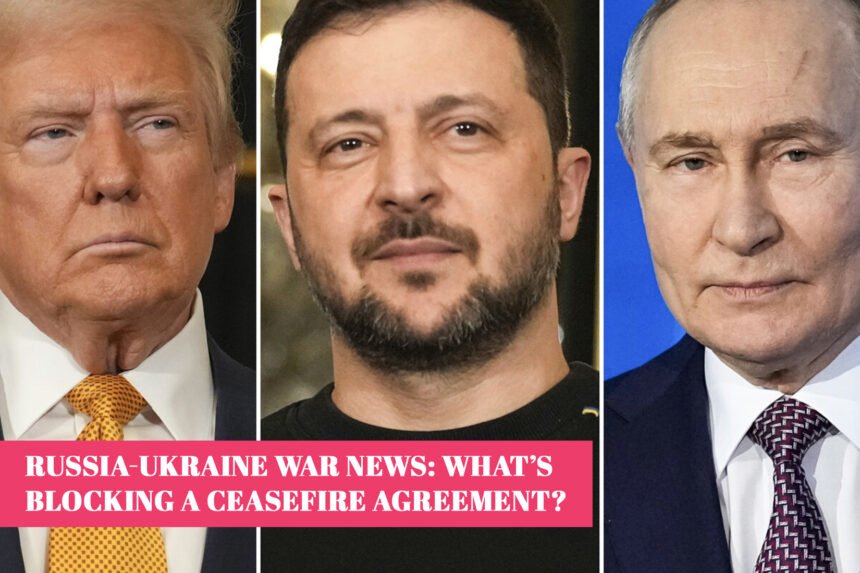Russia-Ukraine War: Last week, Ukrainian and Russian officials sat down together in Istanbul, Türkiye, marking their first direct conversation since March 2022, when Russia started its invasion of Ukraine. The biggest result from these discussions was that both countries agreed to swap 1,000 prisoners of war each. However, no other significant progress was made, and the Ukrainian side criticized Russia for introducing new demands that they found unacceptable.
Background to the Talks
Ukraine has been struggling in the conflict, losing territory in the east and facing setbacks like the failed Kursk offensive. Hoping to create some breathing room, Ukraine requested a 30-day ceasefire before the talks, a proposal also supported by the United States. However, the U.S. has recently shown less enthusiasm for providing further military support to Ukraine, and this uncertainty has influenced the negotiations.
Before the Istanbul meeting, U.S. officials, including President Donald Trump, indicated that real progress would only happen if he met with Russian President Vladimir Putin. Trump suggested that only direct talks between the leaders could lead to a meaningful peace agreement, possibly with help from the Pope. This left the Ukrainian delegation with little leverage going into the meeting, especially since the U.S. was not pushing hard for a ceasefire as a precondition.
What Happened at the Meeting
The Istanbul talks were hosted by Turkish officials, who welcomed the delegations and then left the venue to let the two sides negotiate directly. Ukraine’s team, led by Defense Minister Rustem Umerov, aimed to discuss a ceasefire and the possibility of a future meeting between Presidents Zelensky and Putin. However, Russia sent a lower-level delegation and declined to have Putin attend in person.

During the discussions, Russia demanded that Ukraine withdraw from four eastern regions that Moscow claims as its own, even though Ukraine still controls parts of those areas. These demands were similar to those Russia had previously made in talks with the U.S., raising doubts about whether Moscow was truly interested in ending the conflict.
The Ukrainian side, along with its Western allies, continued to call for an unconditional ceasefire as the first step toward peace, but Russia rejected this proposal. The talks ended without any agreement on a ceasefire or a direct meeting between the two presidents, highlighting the deep divide between the two countries.
The Role of the United States and Europe
The U.S. played a complicated role in these talks. While it supported Ukraine’s call for a ceasefire, it did not insist on this as a requirement for negotiations. President Trump and Secretary of State Marco Rubio both downplayed expectations, saying that no real progress would be made until the U.S. and Russian leaders met directly. At the same time, Ukraine’s European partners warned that if Russia didn’t accept a ceasefire, they would impose additional sanctions on the country.
Russia’s Position
Russia’s delegation presented the meeting as a continuation of previous peace efforts, but its demands remained strict. Moscow insisted that Ukraine must not join NATO, should remain neutral, and must accept Russian control over certain territories. Ukraine refused these conditions, stating that they amounted to surrender.
Despite the lack of progress, Russia portrayed the talks as a tactical win, as President Putin managed to start negotiations without agreeing to halt military actions first—a key demand from Ukraine and its Western supporters. Meanwhile, Russia continued its military attacks in eastern Ukraine, holding on to significant territory and making new advances.
Ukraine’s Difficult Choices
With the U.S. showing less commitment and President Trump’s approach differing from that of European allies, Ukraine faces a tough decision. It can either consider accepting some of Russia’s territorial claims to start peace talks or continue fighting a long and exhausting war with limited support from abroad. The situation in eastern Ukraine remains unstable, with Russia maintaining control over large areas and continuing its offensive.
Although President Putin may have gained some advantage in these negotiations, the ongoing war has also caused serious problems for Russia, both economically and politically. Many observers believe that a peaceful resolution would benefit both countries more than continuing the conflict.
For now, the responsibility to move toward peace rests with Russia. If Moscow is willing to compromise, there could be a new push for a ceasefire and further negotiations. However, as things stand, the prospects for a quick end to the war remain uncertain, and both sides are still far apart on the main issues.
MUST READ: Trump Confirms Russia-Ukraine Ceasefire Talks after Two-Hour Putin Call










